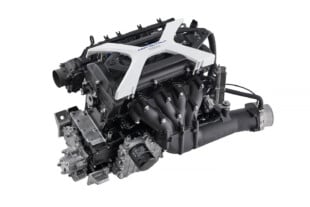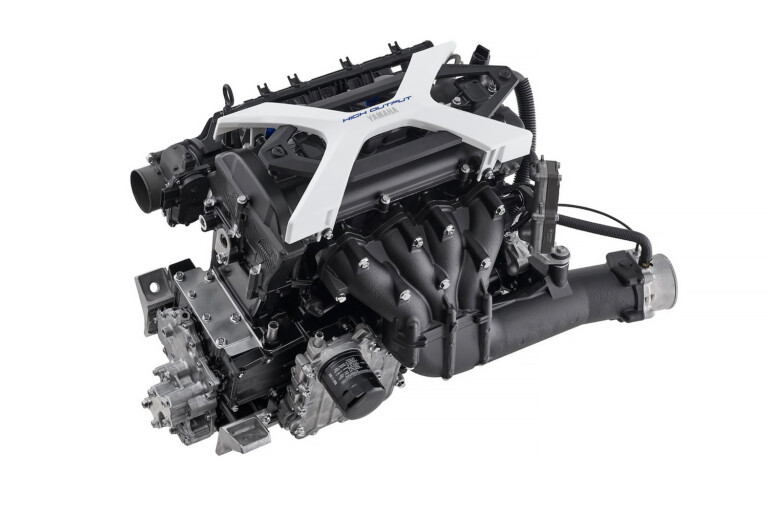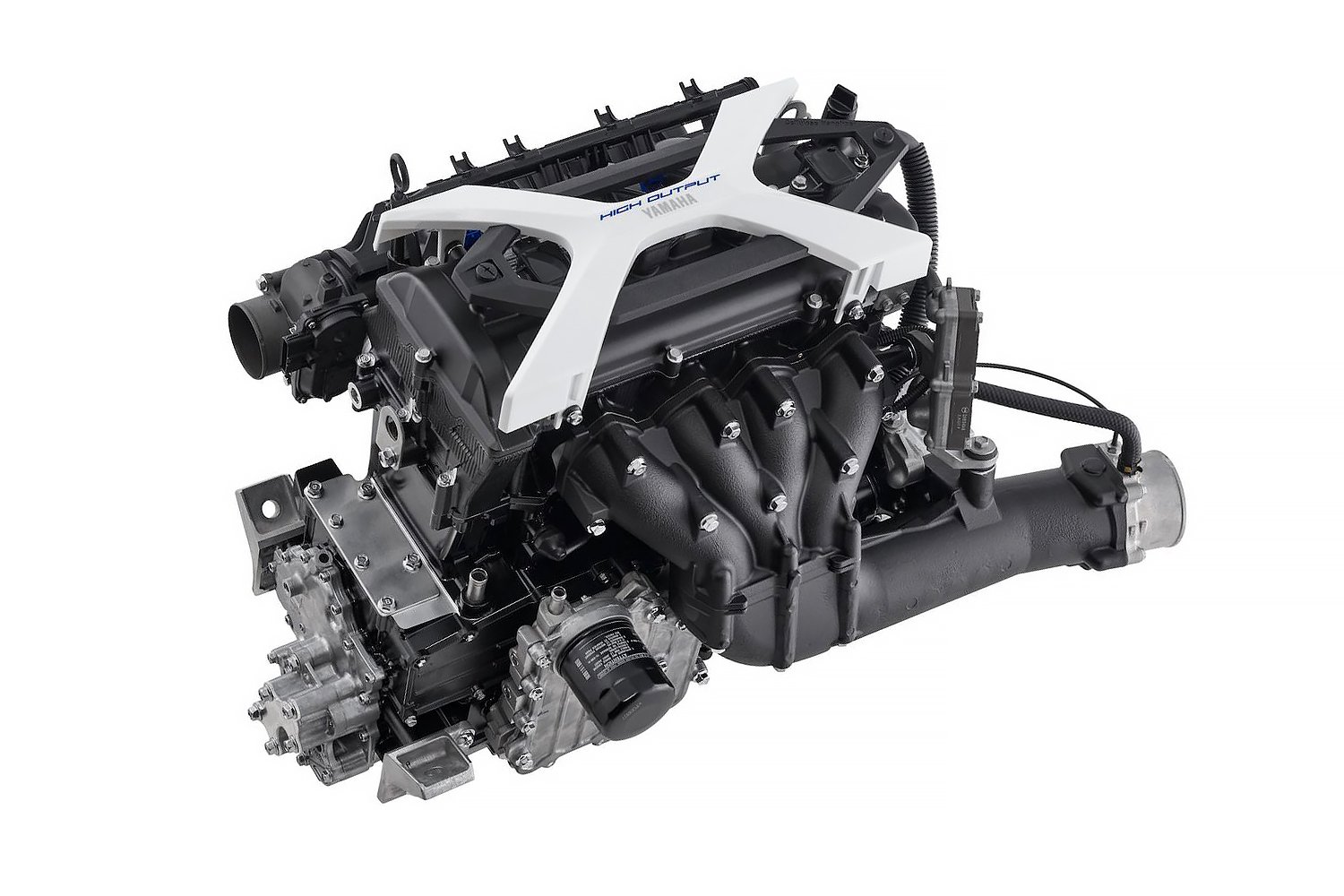When it comes to exhaust manifolds, there are quite a few options to pretty-up the parts that live a very hard life. By and large none of those options include any level of shine. At least not for any extended period of time. In order to get your headers to look good, there are high-temp paints, and ceramic coatings that need to be baked on, or, if you’re like us, the bare stainless-steel look. All of those options share the same dull finish.
So when we heard about this new coating from ZyCoat called “ZyClear High-Temperature High Gloss Clear Coating,” we were both intrigued and skeptical. Having had everything from spray-painted-with-BBQ-paint headers to ceramic-coated, to several-thousand-dollar fabricated stainless works of art under the hood, hearing the words “high-gloss” was really where our attention was grabbed.
According to ZyCoat, ZyClear is a thin-film substance that only adds 4-5 microns of surface thickness to a part. Not only should it withstand 1,200 degrees Fahrenheit of surface temperature, but 2,100 degrees of ambient temperature, while providing corrosion resistance to the material its applied to. Obviously, it’s aimed directly at the exhaust manifold market, but says it’s also compatible with most painted and powdercoated surfaces — so anything “pretty” under your hood is a candidate.

You don’t want to skimp on the wipes. There’s not only the lint-free factor to consider, but the chemical-compatibility factors as well. If you look at all those military and aerospace certifications, you realize there might just be enough of a difference to warrant the extra ten bucks on the price tag.
Add into that, the instructions allowed for a DIY “wipe-on” finish with minimal prep, and our guard went up. We’re not unfamiliar with high-temperature coatings, and the ZyClear instruction sheet seemed to eschew most common methods and offered a process that seems a bit too good to be true. And you know what they say about something that seems to good to be true…
ZyCoat’s founder, Tim McCarthy sent us some ZyClear to try, and talked to us a little bit about the product. Really, he dealt with our questions that basically just had him repeating the instructions to us, because we were struggling with the whole “just wipe it on” part. Since our test subjects for this were the raw stainless-steel GT-40P shorty headers from JBA for our Retro 5.0 project, we were dealing with a virgin surface.
Preparing The Headers
“Since the headers have never been run, you don’t need to do much more than wipe them down with 91-percent isopropyl alcohol,” McCarthy says. “If they had been run previously, you’d have to follow the preheating process in order to get all of the gunk out prior to application.” That process is to simply heat the headers to 500 degrees in an oven for an hour. Then, letting them cool, and wiping them down with the alcohol.
Now, your normal rubbing alcohol is in the 50- to 70-percent concentration range. However, anywhere you can find that, you should also be able to find 91-percent isopropyl alcohol. It’s under $3.00 a quart in the pharmacy at Wal-Mart. No mechanical surface preparation (sanding, wire-wheeling, media-blasting, etc.) is required. However, if you are trying to achieve a certain aesthetic, you can absolutely apply the ZyClear over a media-blasted surface.
The "wipe-on" application method was not only incredibly straightforward, it worked way better than we expected. It was a matter of simply applying some ZyClear to the Sontara wipe, and then wiping it on in a single direction.
Applying The Coating
While there are instructions on how to spray the ZyClear, and between us, we have more than enough spray equipment, where’s the challenge in that? The instructions say you can wipe it on, so that’s what we wanted to try. In the instructions, a very specific Aerospace wipe was specified for use. Thinking “a lint-free wipe is a lint-free wipe” we asked McCarthy about the wipes in our Amazon cart. After all, the cheap, generic wipes on Amazon were ISO 5/Class 100 cleanroom-certified.
“It’s more than just being lint-free,” McCarthy explains. “The DuPont Sontara wipes we suggest are proven to not react with any of the chemicals in the product. Some of the cheaper lint-free wipes are made from polyester, and that might not play well with some of the solvents.” That’s good enough for us, so we typed the DuPont part number into Google, only to find them on Amazon for only about $10 more than the cleanroom wipes we were considering – plus the DuPont wipes are twice the physical size. “Buy now” was clicked and 4 days later, the correct wipes were on our doorstep.
With everything acquired, it was time to apply the coating. After hanging the headers from the ceiling in the garage, it was as simple as pouring some of the ZyClear onto a folded Sontara wipe, and wiping it on per McCarthy’s directions. “Only wipe in one direction,” he advised. “If you feel like you need to go over a spot again, wipe 180 degrees to the direction of the first wipe.”
Once applied, the next step was to wait 60 minutes for the product to air cure. Having had experiences with high-heat paints and coatings previously, we asked McCarthy if it was completely cured after 60 minutes, or if it still needed the heat of operation to completely cure. “ZyClear is completely cured at room temperature after 60 minutes. There’s no need for any supplemental heating to finish curing,” he assured us.
Initially, the headers looked like you had wiped them down with a solvent. But, as the product cured, you could see the difference between treated and untreated spots. After about 90 minutes (we got distracted playing in the garage) we went to cut down the headers and were surprised at the feel of the tubes when we grabbed them. There was a very noticeable tactile difference, where the raw stainless pipes were rough to the touch before, they now felt smooth, almost like they were coated in plastic.
The raw JBA headers now look much shiner and are nicer to the touch than when we started the project. So mission-accomplished there. Now, we’re going to put the headers on Retro 5.0 and run the snot out of it on the dyno. We’ll report back on how the coating holds up once we’ve put it through its paces, but we are definitely hoping it holds up, because these headers sure do look good.
Here you can see the before (left) and after (right). Not only is there definitely additional gloss on the headers, the color has shifted as well, with the headers now being a more gray-silver color, without the yellow/brown hues of the stainless steel as prevalent.























